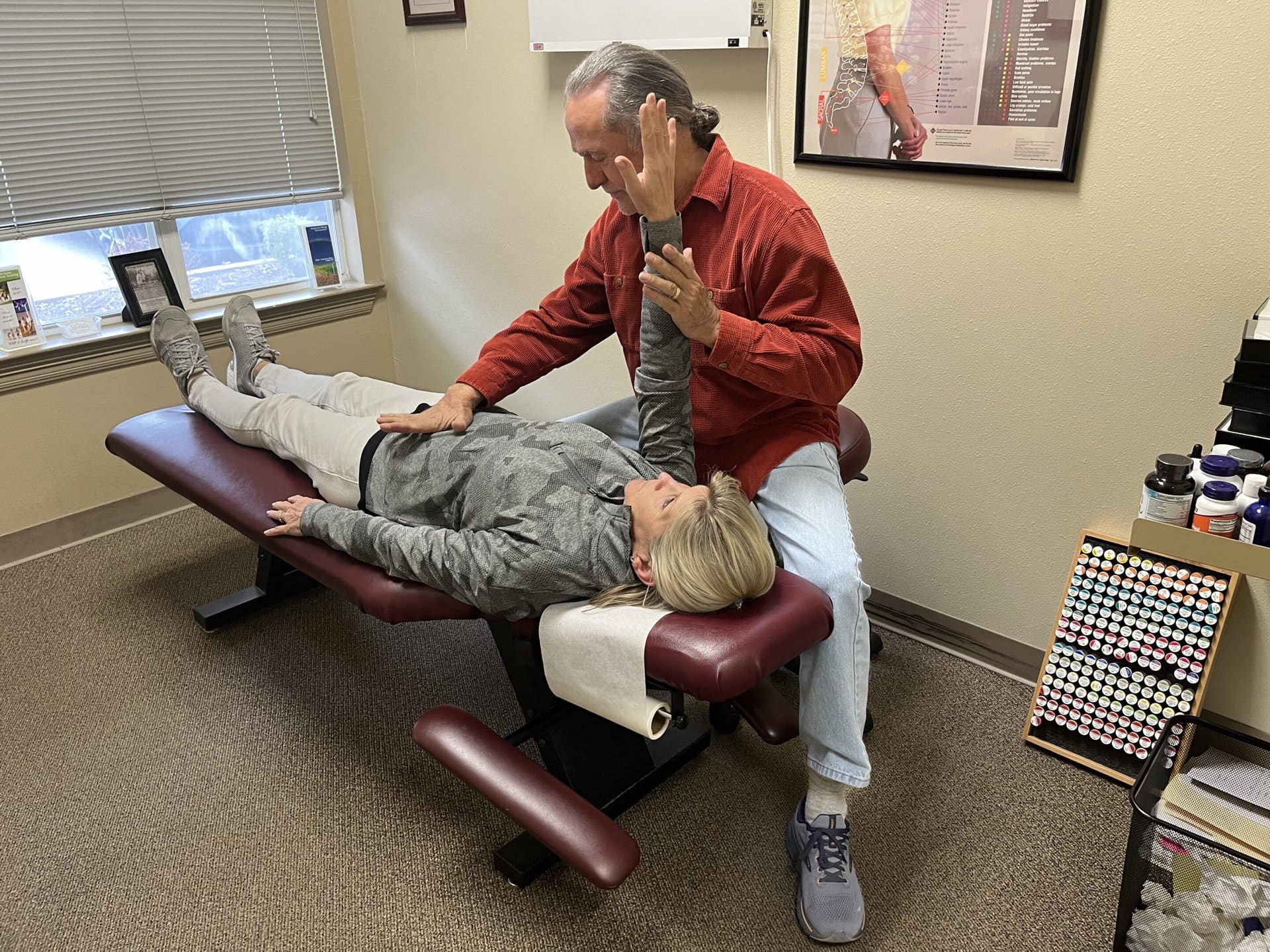Chiropractic care has long been recognized for its ability to alleviate back pain and improve spinal health, but its role in complementing other forms of therapy is often overlooked. In exploring how chiropractic care complements other therapeutic practices, it’s clear that it offers significant benefits, enhancing the effectiveness of various treatment modalities. This article delves into the synergy between chiropractic care and therapies such as physical therapy, massage, acupuncture, and more, demonstrating how they work together to promote holistic health.
Synergy with Physical Therapy
Chiropractic care is not just about making adjustments; it’s about enhancing the body’s natural healing process, which is why it works so well with physical therapy. For instance, a patient recovering from a knee surgery might receive chiropractic adjustments to ensure that spinal alignment doesn’t negatively impact their rehabilitation. This combination can significantly speed up recovery times while reducing pain.
- Chiropractors often work directly with physical therapists to create a coordinated treatment plan.
- Adjustments can reduce the strain on muscles and joints, making physical therapy more effective.
- Patients typically report a faster return to their normal activities when combining these therapies.
Enhancing Effects of Massage Therapy
Combining chiropractic adjustments with massage therapy can lead to profound enhancements in overall wellness. By first ensuring the spine is properly aligned, chiropractors set the stage for massage therapists to more effectively work on soft tissues. This approach not only enhances muscle relaxation but also improves circulation and reduces recovery time from muscle injuries.
- Chiropractic care prepares the body to respond better to massage by aligning the spine.
- Improved blood flow from combined therapies can accelerate healing processes.
- Patients often experience increased range of motion and decreased pain as a result.

Integrating with Acupuncture
Chiropractic care and acupuncture share a common goal: to promote the body’s natural healing abilities. When used together, they offer a powerful combination for managing pain and enhancing overall health. Acupuncture can complement chiropractic care by targeting areas that adjustments might not fully reach, providing a comprehensive approach to pain management.
- Both practices focus on restoring balance within the body.
- Acupuncture can enhance the effects of chiropractic care by stimulating nerve-rich areas.
- Combining these therapies often leads to improved outcomes in chronic pain management.
Chiropractic in Occupational Therapy
In the realm of occupational therapy, chiropractic care is invaluable, especially for patients dealing with workplace injuries or repetitive stress disorders. By aligning the spine and improving joint mobility, chiropractors help patients achieve better ergonomic practices, which is crucial in occupational therapy.
- Chiropractic adjustments can make occupational therapy exercises more effective.
- This combination helps in addressing both acute and chronic conditions.
- Patients working in physically demanding jobs find this combination particularly beneficial.
Complementing Nutritional Counseling
Nutritional counseling and chiropractic care together address both the structural and biochemical aspects of healing. Chiropractors often collaborate with nutritionists to optimize dietary plans that support musculoskeletal health, thereby enhancing the therapeutic effects of both modalities.
- Proper nutrition can speed up the healing process supported by chiropractic care.
- Dietary changes can reduce inflammation, benefiting chiropractic treatments.
- A holistic approach to diet and spine health can significantly improve patient outcomes.

Collaborating with Advanced Allergy Therapeutics
Advanced Allergy Therapeutics and chiropractic care both aim to enhance the body’s immune response and reduce sensitivity to allergens. By improving spinal alignment, chiropractic care ensures that the nervous system functions optimally, which is crucial for effective allergen desensitization.
- Chiropractic adjustments can help in better regulation of the immune system.
- Patients often notice a decrease in allergy symptoms when combining these treatments.
- This therapy pairing is especially beneficial for those with persistent allergic reactions.
Yoga and Chiropractic for Flexibility
Yoga and chiropractic care are a natural fit, each supporting the other in promoting flexibility and spinal health. Regular yoga practice can enhance the benefits of chiropractic adjustments, while the precise alignment from chiropractic care can make yoga poses more effective and safer.
- Both practices emphasize natural body alignment and flexibility.
- Chiropractic care can reduce the risk of injury during yoga.
- Many yoga enthusiasts find that adjustments improve their technique and comfort.
Boosting Mental Health
The relationship between physical and mental health is well-documented, and the combination of chiropractic care with mental health therapies like cognitive behavioral therapy can lead to significant improvements in overall well-being. Physical health improvements, particularly in pain reduction and increased mobility, can have profound effects on mental health.
- A healthy spine contributes to overall mental wellness.
- Reduction in physical pain is often accompanied by improved mood and reduced anxiety.
- Chiropractic patients frequently report better stress management and emotional resilience.

Key Takeaways on Chiropractic Care’s Role in Complementary Therapies
- Chiropractic adjustments enhance the effectiveness of several therapeutic practices.
- Patients benefit from a holistic approach that includes chiropractic care for better overall health.
- Integrating chiropractic care can lead to quicker recoveries and improved long-term health outcomes.
Frequently Asked Questions
- Can chiropractic adjustments reduce the need for medication? Yes, many patients find that regular chiropractic care reduces their reliance on pain relievers and other medications by addressing the root causes of their discomfort.
- Are there any risks in combining chiropractic care with other therapies? When performed by licensed professionals, the combination is generally very safe and can be highly beneficial. However, it’s always important to discuss all your treatments with each healthcare provider involved.
- How quickly can I see results from combining chiropractic care with other therapies? Results can vary depending on the individual and the specific conditions being treated, but many patients notice improvements within a few weeks.
- Is chiropractic care suitable for children and the elderly? Yes, chiropractic care can be adapted to suit people of all ages, providing benefits from improved mobility and pain management to enhanced growth and development in children.
- What should I look for in a chiropractor if I want to integrate other therapies? Look for a chiropractor who is experienced in working as part of a multidisciplinary team and who is open to collaborating with other healthcare professionals to best support your health needs.
Mandeville Total Wellness specializes in Nutrition Response Testing, Chiropractic Care and other wellness treatments, dedicated to fostering your body’s natural healing abilities. Our team combines years of expertise in nutrition and chiropractic wellness with a passion for holistic health, offering personalized care tailored to each individual’s needs. Grounded in the belief that true wellness comes from harmony within the body’s systems, we are at the forefront of a health revolution, guiding you towards optimal health. Discover a vibrant, healthier you with Mandeville Total Wellness, your partners in holistic healing.












